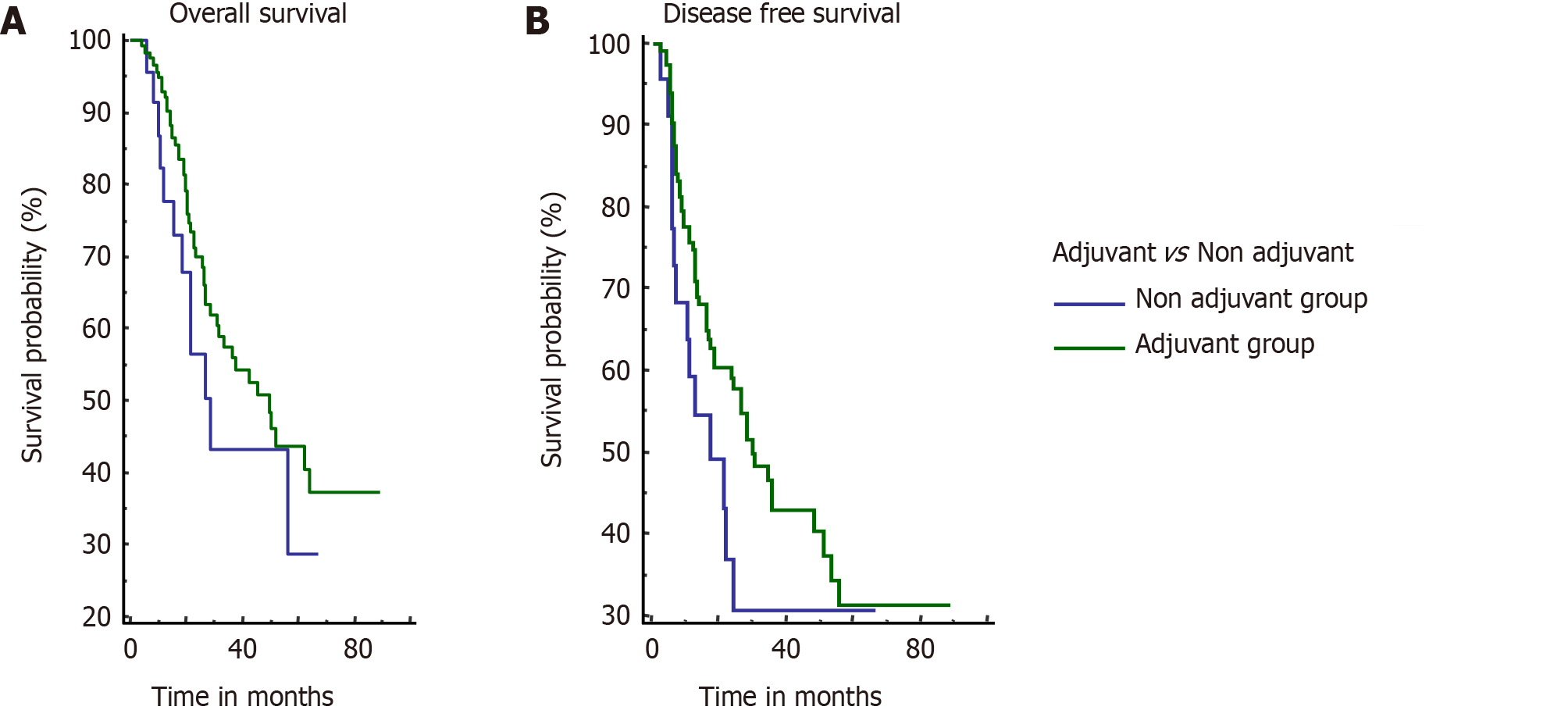Copyright
©The Author(s) 2021.
World J Gastroenterol. Dec 7, 2021; 27(45): 7813-7830
Published online Dec 7, 2021. doi: 10.3748/wjg.v27.i45.7813
Published online Dec 7, 2021. doi: 10.3748/wjg.v27.i45.7813
Figure 1 Details of suspected gallbladder cancer patients taken up for surgical exploration.
NACT: Neoadjuvant chemotherapy; IAC LN: Inter-aortocaval lymph node; CT: Chemotherapy; LC: Laparoscopic cholecystectomy; LF: Lost to follow-up; CRT: Chemoradiotherapy; HPE: Histopatholological examination; ERH: Extended right hepatectomy.
Figure 2 Stagewise overall survival and disease free survival.
A: Stagewise overall survival; B: Stagewise disease free survival. DFS: Disease free survival.
Figure 3 Comparison of overall survival and disease free survival of patients who received adjuvant therapy vs those who did not.
A: Overall survival; B: Disease free survival.
Figure 4 Survival curves of patients with R0 resection compared to R1 resection cases.
Figure 5 Survival curves of patients with pT1/T2 tumors compared to those with pT3/T4 tumors.
Figure 6 Survival curves of patients with perineural invasion compared to those without.
PNI: Perineural invasion.
- Citation: Goel S, Aggarwal A, Iqbal A, Talwar V, Mitra S, Singh S. Multimodality management of gallbladder cancer can lead to a better outcome: Experience from a tertiary care oncology centre in North India. World J Gastroenterol 2021; 27(45): 7813-7830
- URL: https://www.wjgnet.com/1007-9327/full/v27/i45/7813.htm
- DOI: https://dx.doi.org/10.3748/wjg.v27.i45.7813














